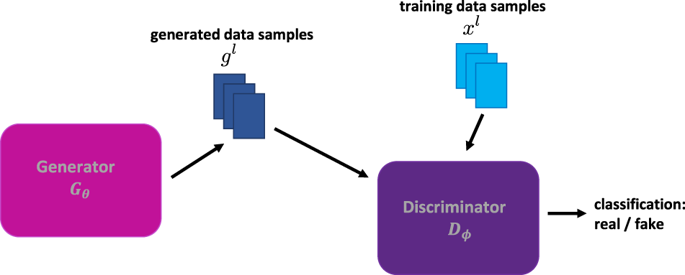npj Quantum Information ( IF 6.6 ) Pub Date : 2019-11-22 , DOI: 10.1038/s41534-019-0223-2 Christa Zoufal , Aurélien Lucchi , Stefan Woerner

|
Quantum algorithms have the potential to outperform their classical counterparts in a variety of tasks. The realization of the advantage often requires the ability to load classical data efficiently into quantum states. However, the best known methods require \({\mathcal{O}}\left({2}^{n}\right)\) gates to load an exact representation of a generic data structure into an \(n\)-qubit state. This scaling can easily predominate the complexity of a quantum algorithm and, thereby, impair potential quantum advantage. Our work presents a hybrid quantum-classical algorithm for efficient, approximate quantum state loading. More precisely, we use quantum Generative Adversarial Networks (qGANs) to facilitate efficient learning and loading of generic probability distributions - implicitly given by data samples - into quantum states. Through the interplay of a quantum channel, such as a variational quantum circuit, and a classical neural network, the qGAN can learn a representation of the probability distribution underlying the data samples and load it into a quantum state. The loading requires \({\mathcal{O}}\left(poly\left(n\right)\right)\) gates and can thus enable the use of potentially advantageous quantum algorithms, such as Quantum Amplitude Estimation. We implement the qGAN distribution learning and loading method with Qiskit and test it using a quantum simulation as well as actual quantum processors provided by the IBM Q Experience. Furthermore, we employ quantum simulation to demonstrate the use of the trained quantum channel in a quantum finance application.
中文翻译:

用于学习和加载随机分布的量子生成对抗网络
量子算法在各种任务中有可能胜过传统算法。实现优势通常需要具有将经典数据有效加载到量子状态的能力。但是,最知名的方法需要\({\ mathcal {O}} \ left({2} ^ {n} \ right)\)门将通用数据结构的精确表示形式加载到\(n \)中-qubit状态。这种缩放可以轻易地主导量子算法的复杂性,从而削弱潜在的量子优势。我们的工作提出了一种有效的,近似的量子态加载的混合量子经典算法。更准确地说,我们使用量子生成对抗网络(qGAN)来促进有效学习和将一般概率分布(由数据样本隐式给出)加载到量子状态。通过诸如变分量子电路之类的量子通道与经典神经网络的相互作用,qGAN可以学习数据样本背后的概率分布表示并将其加载到量子状态。加载需要\({\ mathcal {O}} \ left(poly \ left(n \ right)\ right)\)从而可以使用潜在的有利量子算法,例如量子幅度估计。我们使用Qiskit实现qGAN分布学习和加载方法,并使用量子模拟以及IBM Q Experience提供的实际量子处理器对它进行测试。此外,我们使用量子模拟来演示在量子金融应用程序中训练的量子通道的使用。











































 京公网安备 11010802027423号
京公网安备 11010802027423号